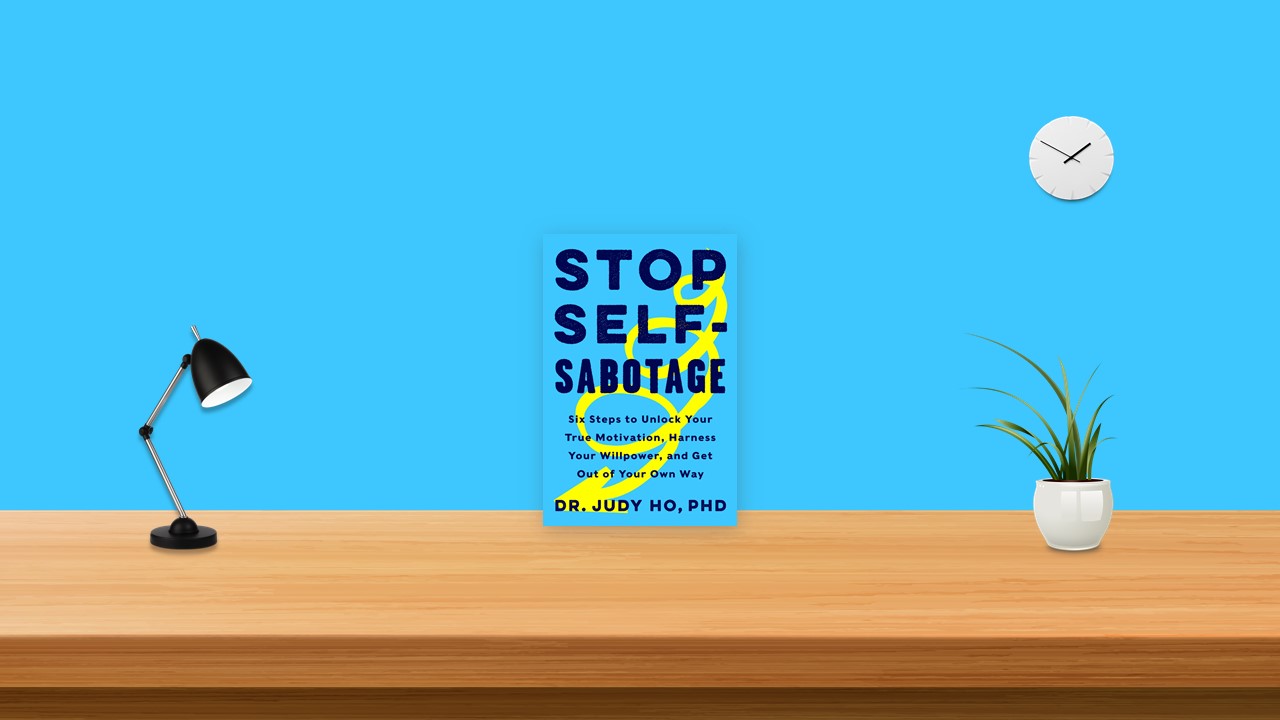Why We Get in Our Own Way
WE ALL have things we want in our lives—to lose those pesky ten pounds, achieve that promotion, go on a second date with someone we’re interested in, or take that fantasy vacation. We set a goal that is near and dear to our hearts, and repeat it to ourselves in our heads and aloud to others more times than we can count. We’ve written this objective on Post-its, to-do lists, calendars, perhaps even carefully selected an image to place on a vision board, bathroom mirror, or refrigerator to inspire us. We have shared this goal with our friends and family, and declared that this is the year we are going to make it happen. Maybe we even asked one of them to hold us accountable to achieve it. So why do we get in our own way? In order to understand where self-sabotage comes from, we need to learn some key concepts about human behavior and raise our awareness of what might be running interference in the background.
Step 1: Identify Self-Sabotage Triggers
Negative automatic thoughts, or self-sabotage triggers, are like the termites that have invaded a house. They seem so tiny and inconsequential individually, but when there are many of them, they can ultimately devastate the foundation and mess with the structure of the entire building. In the same way that termites undermine the integrity of a building, negative thoughts can wear away at you over time and because they lurk in the background, you don’t see the effects until you are in the midst of a fraught relationship or health crisis, or experiencing job trauma.
It’s going to take some time before noticing your self-sabotage triggers in the moment becomes second nature. The process is a bit like going from driving a car with an automatic transmission to one with a manual. When you first learn how to drive a car manually, it feels cumbersome and requires a great deal of conscious effort before you can switch gears smoothly and efficiently. But, like with anything, the more you practice, the better at it you get. Soon, being aware of your thoughts will become your new normal, and noticing these self-sabotage triggers will be like your new autopilot.
And now that you’re making a conscious effort to notice them as they occur and have seen how they are linked to the events that precede them as well as the feelings that follow, you’re well on your way to taking the next step toward transforming these self-sabotage triggers into more balanced thoughts that don’t continue to negatively impact your mood and behaviors. That’s what we will look at next: how to work with these self-sabotage triggers and the negative feelings they provoke so that they don’t create self-sabotage
Step 2: Deactivate Your Triggers and Reset the Thermostat
All thoughts are not created equal. They can be factual—for example, I need to give a speech at the sales conference. Or they can veer away from the facts into thoughts that are not necessarily true: I’m going to totally fail when I give that speech at the sales conference! We often take our thoughts at face value, and when those thoughts are leading us astray into self-sabotage territory, we need to challenge them and find ways to reframe our thought patterns so that we eliminate self-sabotage triggers, and to lessen the impact of our thoughts on how we feel and behave.
You know that thoughts do not represent truth and feelings, no matter how overwhelming they may feel, and they do not have to override your ability to prevent yourself from engaging in self-defeating behaviors. You have learned how to notice your self-sabotage triggers and how to intervene in the moment so that your thoughts and feelings don’t trigger self-sabotage behaviors. Feelings can be brought under control and back to homeostasis.
The key is to find what works best for you so that you can be increasingly aware of negative thoughts and feelings and proactively shift them to reduce the likelihood of self-sabotage. Draw on exercises whenever you need to troubleshoot a thought or feeling that is getting in your way, and know that the more you practice these techniques, the better they will work for you over time.
Step 3: Release the Rut! Rinse and Repeat: The Basic ABCs
As the saying goes, “The definition of insanity is doing the same thing over and over and expecting a different result.” So why on earth do we repeat behaviors, when it doesn’t get us the results we want?
Thoughts and feelings that trigger self-sabotage make up an important part of the picture, but we aren’t done yet! When behaviors are reinforced, they are encouraged and strengthened over time. So we have to find out exactly why and how reinforcement is happening in your life. This is where the ABCs play a huge role.
A Is for Antecedent. An antecedent is a stimulus event, situation, or circumstance that immediately precedes a behavior
B Is for Behavior. Behaviors are so innate and natural to us most of the time—unless someone is “behaving badly” we don’t often stop to think about what drives us to behave in the ways we do.
C Is for Consequences. So, antecedents drive our behaviors, and those behaviors have consequences. Usually, we think of consequences in a negative light, as in “suffer the consequences,” but they can actually be positive or negative.
Behaviors are more or less likely to occur when certain antecedents are present or absent.
Behaviors are likely to be strengthened and more likely to be repeated when it is followed by a reinforcing consequence (either through doling out a rewarding outcome or avoiding a negative result).
Behaviors are less likely to occur when a reinforcing consequence no longer follows the behavior.
Learning these ABCs can help you to understand why you behave the way you do as well as recognize the links in the chain of cause and effect. When you can pinpoint what happened before (antecedents) as well as what took place in the wake of a specific action (behavior) (consequences) you can more clearly see what drives you to repeat that behavior again and again. When it is a behavior you do not want to repeat—like self-sabotage—knowing how antecedents set you up for behaving in a certain way gives you insight into how to break the chain. On the flip side, you want to seek out what leads to desired results and strive to perform those behaviors in the future.
Step 4: Replacement, Not Repetition
We all have habits, many of which are harmless but some of which can lead to self-sabotage. Maybe you eat the same dinner of chicken, pasta, and broccoli several times a week or always have Love Actually on in the background while you clean your house. Boring? Perhaps. But these habits don’t necessarily cause problems. There are other habits that aren’t quite so harmless, particularly those that keep you in unproductive behavioral loops. These are the fodder of self-sabotage: much like a hamster on a wheel, repeating the same behaviors without forward momentum, gradually solidifying the belief that you can’t overcome the obstacles to reach your goals after all.
The way out of an unproductive behavioral loop is knowing the steps that got you on the path to nowhere in the first place. Breaking a long-established pattern of behavior for good takes more than just your best intentions or awareness of how and when the problems occurs. Even when you possess problem-solving strategies.
It doesn’t guarantee that you will use them when you need them most. To be assured that you will reach for those strategies and implement them consistently, you need to boost your self-regulation skills. These are the skills that enable you to resist the temptations, impulses, and urges that might take you off course.
Step 5: A Value a Day Keeps Self-Sabotage Away
Values are at the heart of what gives meaning and purpose to our lives. They are the guiding forces of what brings us joy, and what we desire. Some are personal while others, as Drs. Laura Parks and Russell Guay describe, are socialized beliefs that serve as guiding principles about how individuals should behave.
Values are not ethics or morals, but represent what’s important to each of us and gives us purpose. Everyone’s values are unique to them, are freely chosen by each person, and evolve over time.
Because values are such a critical aspect of our lives and how we live them, they are often related to which goals we decide to pursue, even if we don’t state them explicitly. They are also a deciding factor into how successful we will be in attaining those goals, especially over long periods of time. If your goals are not in sync with your values, that can also explain why you haven’t been very successful in reaching them—a goal devoid of meaning isn’t going to generate very strong goal commitment or goal striving. If you’ve ever felt kind of empty after reaching a goal and found yourself asking, “What’s next?” in a perplexed fashion, it might mean that you’ve invested in a goal that didn’t have much substance to it
Step 6: Create a Blueprint for Change
Your last step is to create a personalized Blueprint for Change that pulls together all of the concepts and techniques you have learned. Your blueprint is put together piece by piece, similar to the way one would construct the blueprint for a house—carefully, methodically, and building upward from a solid foundation. Take your time creating this blueprint. The stronger the foundation is, the stronger the structure of your self-sabotage stopping plan will be. In order to reach the goals that are near and dear to your heart, you need to take time to lay the foundation carefully and thoughtfully to create a new superstructure. And that new superstructure is the new you, the you that knows exactly how to stop self-sabotage and transform your thinking so that you can achieve the success you seek in relationships, career, and more.


